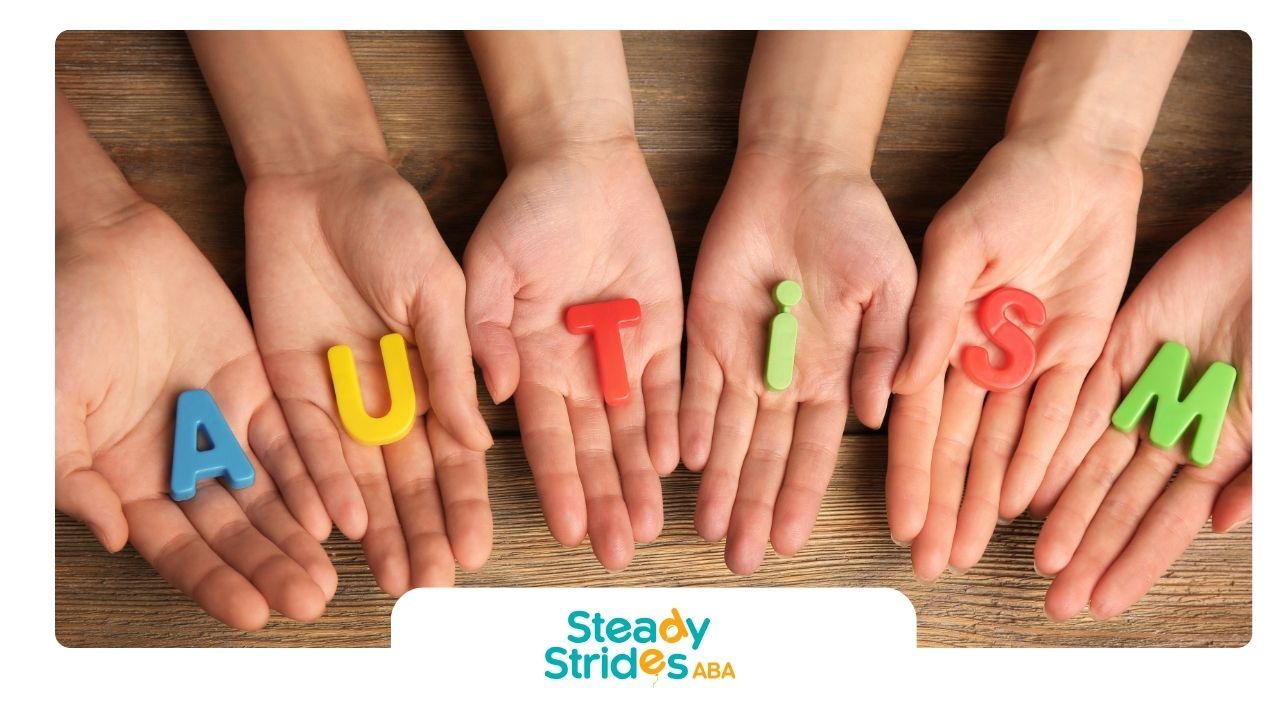Applied Behavior Analysis, or ABA therapy, is recognized for its scientific approach to helping individuals with autism. This therapy focuses on behavior analysis. It looks at how behavior is affected by environmental factors and learning. By breaking down complex actions into manageable steps, ABA therapy enables children with autism to learn essential skills. These skills include communication, social interaction, and daily living. Due to its structured methods, ABA therapy is a safe and trusted approach to support genuine growth and positive change.
Core Scientific Principles of ABA Therapy
At the center of ABA therapy is a strong base formed from many years of psychological studies. It combines classical conditioning, operant conditioning, and the three-term contingency. These main principles help us understand how people learn behaviors, get rewards, and keep those behaviors over time. Knowing these basics is important to see how ABA makes lasting changes.
This approach helps therapists create plans specific to each person's needs and surroundings. By applying these tested ideas, behavior analysts can support skill growth and lower difficult behaviors. This leads to progress for children with autism.
Classical Conditioning and Pavlov’s Legacy
Classical conditioning, introduced by Ivan Pavlov, is the basis for understanding how we can shape behavior through association. Pavlov’s famous tests showed that a neutral thing, like a bell, could cause a specific reaction, such as a dog drooling, just by being linked with something natural, like food. So, the dog eventually learned to associate the sound of the bell with mealtime. This was an important step in understanding the principles of behavior.
This key idea is important in Applied Behavior Analysis (ABA). It helps us see how things around us can trigger learned behaviors in children with autism. Though classical conditioning is not the main tool used in modern ABA therapy, it helped create the foundation for future advancements in behavior analysis.
By understanding these associations, ABA therapists can teach children to expect and react to social or learning cues. This knowledge is essential for forming more complex strategies for behavior change used in ABA therapy today.
Operant Conditioning and B.F. Skinner’s Influence
Operant conditioning, an idea from B.F. Skinner, plays an important role in ABA therapy. Skinner studied animals with tools called Skinner boxes. His work showed that behaviors can change based on what happens after them. Positive results, like a food reward, make a behavior more likely to happen. Negative results make it less likely.
This idea is key for changing behavior in ABA therapy. By carefully using positive or negative reinforcement, therapists and caregivers can help or stop certain actions in children with autism. Operant conditioning helps teach important life skills, such as communication and self-care, by using steady reinforcement.
Today, operant conditioning is the basis for most ABA programs. It helps therapists create tailored plans that lead to real and lasting improvements. The ability to change behavior based on results is what makes Skinner’s work so important in ABA and its continuing success.
Understanding the Three-Term Contingency (ABC Model)
Exploring the three-term contingency, also known as the ABC model, shows how behavior analysis can change behavior effectively. "A" stands for Antecedent. This is what triggers a behavior. "B" means the behavior itself, which is often the action we want to improve. "C" represents Consequence, the result that can either encourage or discourage that behavior. This model helps behavior analysts find and support positive outcomes. It allows people to develop important skills, like communication and social interactions. Using this model creates a clear path for behavior change, leading to better results in everyday life.
Key Components of ABA Therapy
Successful ABA therapy involves key parts that help children learn and change their behavior positively. These parts include constantly collecting data, assessing each child’s needs, and using a good mix of rewards and teaching methods.
Therapists work on breaking skills into smaller, easier steps. They also help children use what they learn in different situations. This well-rounded approach allows ABA to meet the different needs of each child with autism. It supports their growth in social skills, academic skills, and daily living skills.
Data-Driven Decision Making and Continuous Assessment
ABA therapy focuses on using data to make smart choices and make regular checks on progress. Behavior analysts carefully collect data to see how children are doing and choose the best ways to help them. This scientific approach makes sure that each child gets therapy that is especially designed for them.
Data is collected on everything, like learning new skills and reducing problem behaviors. Ongoing checks help therapists know what is working and what isn’t, allowing them to change plans quickly. This constant monitoring makes therapy effective and efficient.
Thanks to regular observation and review, families and therapists can celebrate achievements and quickly solve problems. The outcome is a flexible and personalized plan that supports children as they learn and grow.
Reinforcement Strategies: Positive and Negative Reinforcement
Reinforcement is very important in changing behavior in ABA. Positive reinforcement means giving a reward, like praise or tokens, when a child shows a desired behavior. This reward makes it more likely the child will do the behavior again. It's very helpful for teaching new skills or encouraging good actions.
Negative reinforcement works a bit differently. It involves removing something unpleasant when the child acts the way we want. For example, if we stop a loud noise right after the child finishes a task, it can help the child feel relief, encouraging the desired behavior. Both positive and negative reinforcement are strong ways to create lasting changes in behavior.
By combining these two strategies well, ABA therapists can help kids stay motivated, learn new skills, and reduce unwanted behaviors. This careful and regular use of reinforcement is a key part of why ABA works so well.
Techniques of Prompting and Fading for Skill Acquisition
Prompting is a common ABA way to help a child do a task or show desired behavior. Prompts can be physical, verbal, or visual, based on what the child needs. This method makes sure children get the help they need to learn new skills.
When the child starts to master the skill, therapists slowly reduce or “fade” these prompts. Fading is important. It helps the child become independent and do the skill without help later on.
Prompting and fading are both important for learning skills. They set up a learning environment that mixes support and independence. This helps children become more self-reliant as they develop their abilities.
Task Analysis and Chaining for Complex Behaviors
Task analysis is an important ABA method. It means breaking down complex tasks into smaller steps that are easier to teach. For example, getting dressed or washing hands can be split into simple actions. Children can learn and practice these actions one by one. This way, it is easier for them to master complex tasks.
Chaining is similar. It means putting these smaller steps together in a logical order. Therapists may teach each step separately and then link them. This helps the child perform the whole task from beginning to end. Chaining can happen in a forward, backward, or total way, depending on what the child needs.
This approach helps teach complex tasks and builds confidence. By using task analysis and chaining, ABA helps children do multi-step tasks by themselves. This boosts their real-world skills and self-esteem.
Generalization of Skills Across Various Environments
A special strength of ABA therapy is that it focuses on generalization. This helps children use their new skills in different places. For example, if a child learns to ask for help at a therapy center, they can also ask for help at home, school, or in the community.
To encourage generalization, therapists create activities in different environments and with various people. They also use different materials. This way, progress is not just seen in therapy sessions but also in everyday life.
Generalization is important for developing adaptive skills. These skills can improve a child's independence and quality of life. By helping children use skills in different situations, ABA therapy sets them up for long-term success and more involvement in their world.
Evidence of ABA’s Effectiveness
ABA therapy is supported by a lot of research that shows it helps children with autism. Many studies indicate that children improve in communication, social skills, and daily living. This shows that ABA can make a big and meaningful difference.
Because of this strong evidence, major health groups like the American Psychological Association have recommended ABA as a top choice for treating autism. The flexibility of ABA, along with strong data, gives families trust in its benefits in everyday life.
Research-Backed Outcomes: Studies and Trials
Decades of research and countless ABA studies demonstrate consistently positive outcomes for children on the autism spectrum. Controlled trials and longitudinal analyses have measured improvements in IQ, language, social engagement, and daily living skills after intensive ABA intervention. For example, the landmark study by Lovaas (1987) showed that children receiving 40 hours of weekly ABA displayed marked progress in adaptive behavior and intellectual development.
Meta-analyses also confirm ABA’s effectiveness across diverse populations. Many children in these programs show substantial progress compared to peers in other, less structured interventions. The evidence supports ABA’s role as an effective, science-based therapy.
| Study / Author | Focus Area | Outcome |
|---|---|---|
| Lovaas (1987) | IQ & Adaptive Skills | Significant improvements for children with autism |
| Eldevik et al. (2009) | Cognitive & Adaptive Skills | Substantial progress vs. non-ABA interventions |
| Reichow (2012) | Overall Effectiveness | Consistent skill gains and improved functioning |
| Vismara & Rogers (2010) | Parent-Led ABA | Enhanced social communication skills |
| Smith & Iadarola (2015) | Social & Communication | Documented gains in language, social, and daily life |
Adaptability of ABA Across the Autism Spectrum
One of the best things about ABA is its flexibility. Children with autism spectrum disorder have different needs. These can range from mild to complex. ABA techniques can be adjusted to help individuals with different abilities, issues, and learning methods.
Therapists make special plans. This is done based on whether a child is nonverbal, needs help with self-care, or is learning social skills. This personal touch allows ABA therapy to help people of all ages and at all levels of development.
With the adaptability of ABA techniques, children not only learn new skills. They also build confidence in using those skills in different places and situations. This leads to real progress that honors the different experiences across the autism spectrum.
Practical Applications of ABA Science
The practical benefits of ABA’s scientific roots are visible every day in schools, homes, and therapy sessions. When people use evidence-based behavior modification regularly, kids learn helpful behaviors. This helps them become more independent and successful.
Families and teachers see how ABA principles can change specific behaviors, promote skill development, and control challenging actions. By combining structured learning with caring support, ABA helps children with autism achieve their potential.
Behavior Modification Techniques and Examples
Behavior modification is the main focus of ABA practice. Behavior analysts carefully watch children to figure out specific behaviors to change. They set clear goals for each child. For example, a child can learn to use words instead of throwing tantrums to get attention. This change helps turn challenging behavior into better communication.
To help make these changes, therapists might use visual schedules, token systems, or social stories. They choose the right tool based on what will motivate the child. Consistent use helps make sure new behaviors are taught and kept over time.
As children succeed with small behavior changes, their confidence grows, and they can make more progress. These positive changes can also improve their social skills and daily routines.
Skill Development Through Structured Learning
ABA therapy creates a clear and organized learning space. It focuses on helping kids develop skills steadily. Each session has specific goals and small steps. This includes teaching things like eye contact, following instructions, reading, and writing. By breaking down these skills and repeating them, children can learn even difficult tasks well.
ABA therapy uses important methods like reinforcement, prompting, and steady progress. As kids get better, the tasks grow harder. This helps them keep improving. Their progress is tracked closely, and every success is praised to encourage them to keep trying.
This careful method makes learning a fun and reachable goal. Children gain a strong base of useful skills. These skills help them do well in school and in everyday life.
Addressing and Reducing Challenging Behaviors
ABA therapists are great at helping children reduce challenging behaviors that can get in the way of learning and relationships. This process begins with a detailed assessment to find out the reasons behind each behavior, using tools like functional behavior assessments and the ABC model.
After understanding the main causes, a focused intervention plan is made. Therapists teach new, appropriate behaviors to meet the same needs. For example, children may learn to use words to ask for a break instead of acting aggressively or hurting themselves. Reinforcement and skill-building are key parts of this process.
Therapists carefully monitor and adjust the strategies to make sure they work well. Over time, children find better ways to express themselves and interact with their surroundings. This creates a calmer and happier environment for everyone involved.
Conclusion
In simple terms, understanding how Applied Behavior Analysis (ABA) therapy works is important for seeing how it helps people with autism. ABA is based on well-known ideas from psychology like classical and operant conditioning. It uses a clear method to change behavior and help gain new skills. There is strong evidence that shows ABA works well, bringing good results for many people with autism. With its focus on data and personalized strategies, ABA therapy not only helps with difficult behaviors but also boosts important skill growth. This allows individuals to succeed.
At Steady Strides ABA, science isn’t just theory—it’s practice. As the best ABA provider in Texas, we use data-backed strategies that are proven to help children on the autism spectrum make meaningful progress. Every step is guided by precision, care, and a deep understanding of how behavior works. If you’re ready to move forward with support that’s smart and personal, we’re here to walk with you. Let’s take the next step, together.
Frequently Asked Questions
Is ABA therapy scientifically proven?
Yes, ABA therapy is backed by science. Many studies have shown it to be an effective treatment for autism. It has strong, evidence-based results in communication, behavior, and learning. Leading health organizations around the world support the effectiveness of ABA.
How does ABA differ from other therapies?
ABA therapy is different from other therapies because it uses a unique behavior analysis method. It focuses on behaviors that can be seen and measured. Unlike many other forms of therapy, ABA therapy provides personalized interventions. It collects data all the time and uses reinforcement strategies to get specific and individual results.
Can ABA help nonverbal children?
Sure. ABA therapy works really well for nonverbal children. It helps them learn communication skills and fosters language development using organized teaching and rewards. Many nonverbal children see positive outcomes, like using alternative ways to communicate more and interacting better with others.
Sources:
- https://www.verywellmind.com/classical-conditioning-2794859
- https://www.behavior-analysis.org/
- https://www.verywellmind.com/operant-conditioning-a2-2794863
- https://taylorandfrancis.com/knowledge/Medicine_and_healthcare/Psychiatry/Three-term_contingency/
- https://www.simplypsychology.org/positive-reinforcement.html
- https://www.simplypsychology.org/negative-reinforcement.html
- https://www.apa.org/
- https://pmc.ncbi.nlm.nih.gov/articles/PMC9458805/













